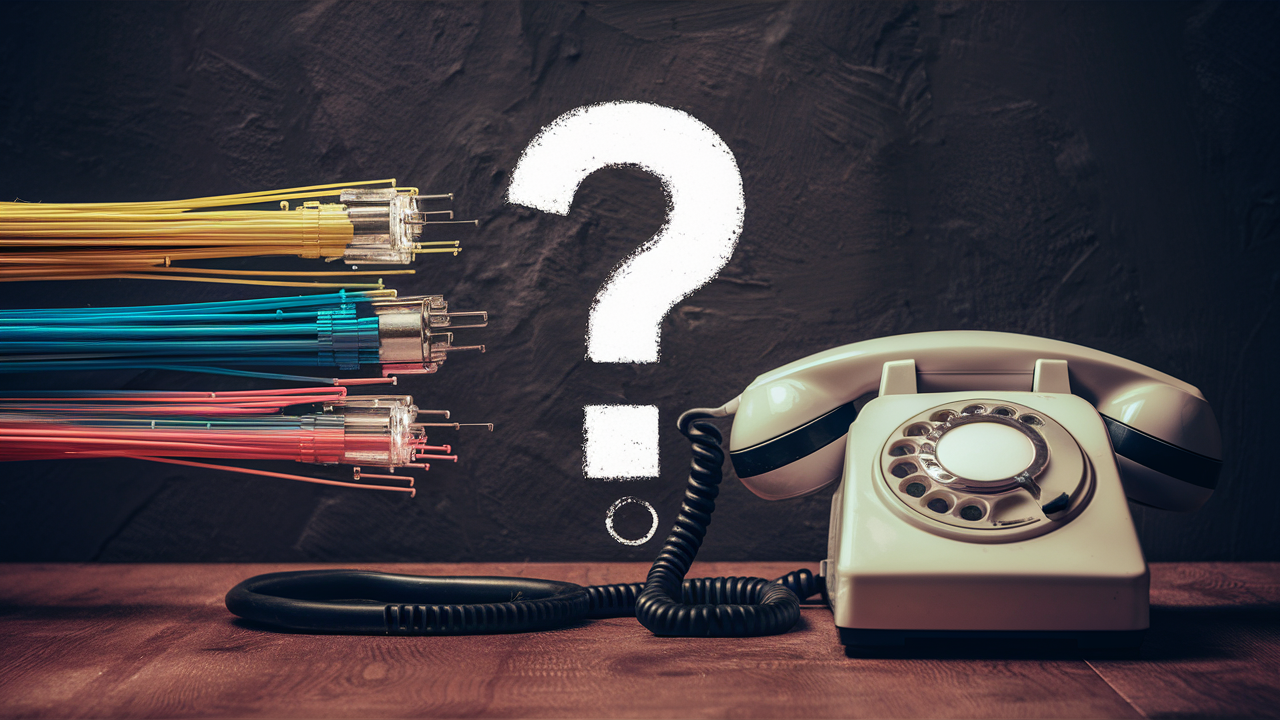Is a phone line needed for fiber optic internet?

Fast becoming the best broadband connection and being embraced as the last frontier of internet service connectivity is fiber optic internet. Considering fiber optic lines, an internet connection can run at 1 Gbps. This is much quicker than more recent technologies such as cable Internet and DSL.
Whenever fiber optic AT&T Internet is implemented across the country, some may have this question - Is a phone line required for fiber optic Internet connection services?
As fiber optic internet circles the country there is always this question that arises among the public, do I require a phone line for fiber optic internet connection services? Although it may come bundled with a phone service, fiber internet is not dependent on a phone line to function.
Understanding how Fiber Optic Internet service functions
Before revealing why a phone line is not needed, let’s explore how fiber optic internet is available. Fiber optic cables transfer data through the use of light instead of electricity on the metal wires used in other systems. This results in faster speed and much more bandwidth as compared to the earlier traditional methods.
The fiber optic network has a few main components
- Copper cables – heavy metallic wires in which data is transmitted in the form of electrical pulses.
- Optical receiver – A laser receives a light signal converts it into the electronic data signal form and transmits it through the fiber optic cable.
- Optical transmitter - Transmits the light signal that is running through the fiber optic cable back into an electronic signal format.
- Fiber modem – This is a device that connects to the fiber jack in a home and transmits light signals in a form that is interpretable by WiFi or Ethernet for the devices to use.
Fiber optic internet provides you with a dedicated internet service that does not involve sharing of connection. It is not like phone lines or cable TV networks for instance DSL or cable internet connection. The optical fibers, unlike other common lines, directly transmit data to and from your home without the use of a shared structure.
Why One Is Not Needed
Many people still use the conventional fixed wired phone service that employs copper phones and transmits voice and call data in an analog form from homes to the telephone company office. DSL internet utilizes these POTS lines to provide internet to homes by ‘borrowing’ the telephone line.
Now, fiber internet has its own set of infrastructure which is fiber optic cables for transmitting data. It does not influence phone communications in any way. It also assists in freeing space on telephone structures whilst providing improved direct Web speeds.
Fiber optic internet sends data—in the form of light—to your house. It does not have to put filters on or split off from an existing phone line, thus does not have to install filters on or split off from an existing phone line. Most people still have DSL, which does work on phone lines, hence this is false.
A last point in this is that fiber optic internet provides plenty of capacity for VOIP, hence a phone connection is not required. Most of the fiber internet companies also feature Digital Voice over Internet Protocol (VoIP) phone options. Unlike conventional phone service, many VoIP providers make use of an internet connection rather than a phone landline.
Some of the factors that should be taken into consideration when deciding to shift to fiber optics are as follows:
Regarding your phone configuration, there are several things to consider while moving to fiber optic internet: Regarding your phone system, there are a few things to consider while moving over to fiber optic internet:
- It allows you to retain your phone number - Phone companies even transfer your number to a VoIP phone line to use with your newly acquired fiber optic internet.
- Compatibility issues with the existing home alarm system – Older home alarm systems use landlines to operate; thus, it is vital to determine if a fiber optic connection will be compatible with the existing system. You may have to switch to an alarm monitoring service that can function with internet and cellular instead.
- Backup communication – In case of an internet connection problem, it is advisable to have a simple phone, an analog, or a cellular one as the last resort. While VoIP is over fiber optics, the phone is unavailable when there is a problem with the internet connection.
With the increasing availability of fiber optics, the number of households with traditional POTs landline connections continues to decline each year. United States: CDC reports reveal that about 45 percent of households are shifting to wireless-only cell phone use. Fiber internet thus assists in enhancing this wireless phone trend by providing a fast reliable home internet connection without the need for phone wires.
The Bottom Line
Fiber optic internet provides much faster internet speeds with low lag time, high bandwidth, and high reliability than the use of the old-fashioned DSL. It conveys data as beams of light through fiber optics separate from other systems and structures. It does not at any point use or interface with telephone landlines, unlike the DSL.
So if you find out that fiber internet services are being extended to your locality, you should not hesitate to increase your home network speed to light speed. Goodbye to that old phone cord, the one that you have been constantly unplugging and plugging in all this while!
Upgrade to faster, more reliable AT&T Fiber Internet today! Call us at +1 844-905-5002 and get connected with speeds that keep you ahead.





